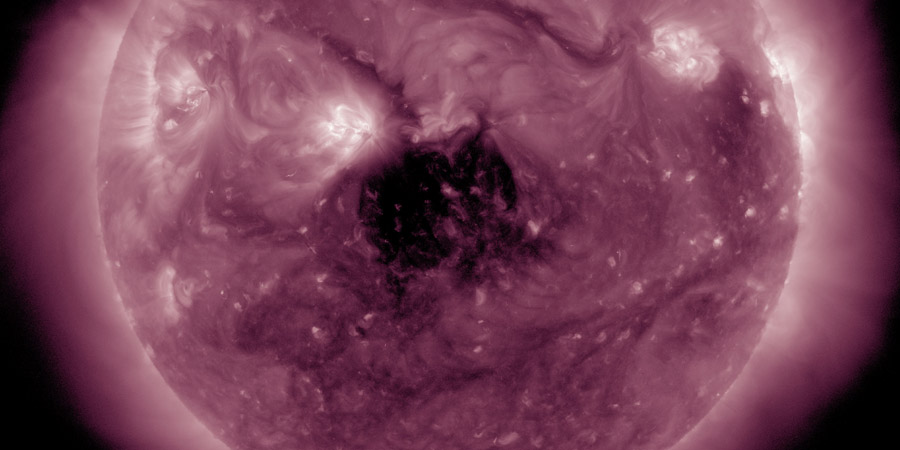Coronal hole faces Earth, Mercury transit coming up
Friday, 6 May 2016 21:03 UTC

A trans equatorial coronal hole is now facing Earth. This coronal hole is sending an enhanced solar wind stream towards Earth which should start to affect Earth either this Sunday (8 May) or Monday (9 May) and it will likely cause enhanced geomagnetic conditions when the stream arrives. The NOAA SWPC has a minor G1 geomagnetic storm watch in effect for Monday, 9 May.
A coronal hole is facing Earth. Enhanced solar wind could arrive in ~3 days - Follow live on https://t.co/T1Jkf6i4Cb pic.twitter.com/XIXXZKTTdH
— SpaceWeatherLive (@_SpaceWeather_) 6 mei 2016
This coronal hole is by far the most interesting solar feature on the Earth-facing solar disk at the moment as there are no sunspot regions currently visible which could produce a significant (M or X-class) solar flare. It is clear that we are well on our way to solar minimum as we discussed in our previous news item.
Mercury transit coming up
This Monday there will be a very good reason to watch the Sun. The planet Mercury will transit the Sun! While not as rare as a Venus transit, this will in fact be the first Mercury transit that SDO will observe.
Where will you be during Monday's Mercury transit? Will you be watching the images from NASA's SDO spacecraft or do you have a solar telescope to observe this event? Let us know in the comments!
Thank you for reading this article! Did you have any trouble with the technical terms used in this article? Our help section is the place to be where you can find in-depth articles, a FAQ and a list with common abbreviations. Still puzzled? Just post on our forum where we will help you the best we can!
Latest news
Latest forum messages
Support SpaceWeatherLive.com!
A lot of people come to SpaceWeatherLive to follow the Sun's activity or if there is aurora to be seen, but with more traffic comes higher server costs. Consider a donation if you enjoy SpaceWeatherLive so we can keep the website online!

Space weather facts
| Last X-flare | 2025/03/28 | X1.1 |
| Last M-flare | 2025/04/01 | M5.6 |
| Last geomagnetic storm | 2025/03/27 | Kp5 (G1) |
| Spotless days | |
|---|---|
| Last spotless day | 2022/06/08 |
| Monthly mean Sunspot Number | |
|---|---|
| February 2025 | 154.6 +17.6 |
| Last 30 days | 128.5 -22.7 |


